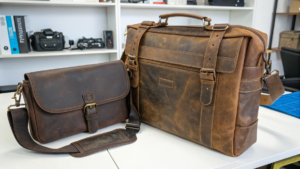Why is a Custom Enamel Badge Your Tiny Storyteller?
Are you looking for a unique way to show your personality? A small enamel badge can speak volumes. It is more than just a decoration. It is a statement.
A custom enamel badge is your tiny storyteller because it offers a compact yet powerful way to express individuality, showcase passions, and communicate personal or brand narratives, transforming everyday items into canvases for self-expression.

I've always believed that small details make a big impact. An enamel badge is a perfect example. It's a little piece of art. It tells your story.
How do people display enamel pins?
Do you have enamel pins and want to show them off? There are many creative ways people display these tiny treasures.
People display enamel pins on clothing like jackets, bags, and hats to personalize their style, or as collectibles on display boards1, banners, and frames, showcasing their passions and unique aesthetic.

Why are jackets and bags popular for pins?
Jackets and bags are very popular for displaying enamel pins2. A denim jacket, for example, provides a perfect canvas. Its sturdy fabric holds pins well. It allows for many pins without looking cluttered. Bags, like canvas totes or backpacks, also offer a great display area. Pins can add a pop of color and personality to an otherwise plain bag. These items are also worn or carried often. This means your pins get seen by many people. They become conversation starters. I often put pins on my travel bags. Each pin reminds me of a place or an experience. It makes the item unique to me. It's about wearing your story. This widespread visibility makes jackets and bags ideal for showcasing your collection, turning everyday items into dynamic extensions of your identity.
| Display Surface | Aesthetic / Feel | Best For | Considerations |
|---|---|---|---|
| Denim Jacket | Casual, edgy, personal | Everyday wear, collection display | Sturdy fabric, good for many pins |
| Canvas Tote Bag | Casual, artistic, portable | Daily carry, expressing interests | Lightweight, easy to add/remove pins |
| Backpack | Functional, adventurous, diverse | Travel, school, showing affiliations | Durable, good for larger collections |
| Hat (e.g., Beanie) | Playful, subtle, fashion-forward | Adding flair, quick style change | Limited space, specific aesthetic |
| Pin Board / Banner | Organized, collector-focused, home display | Dedicated collections, art showcase | Protects pins, easy to view |
| Lanyard | Functional, accessible, event-focused | Conferences, conventions, daily access | Quick visibility, can be worn easily |
How can display boards be used?
Display boards are excellent for collectors who want to show off their enamel pins at home. These boards are usually made of cork, felt, or fabric-covered foam. They let you arrange your pins in patterns. You can group them by theme. This makes your collection look like art. Display boards also protect your pins. They keep them safe when not being worn. This prevents them from getting lost or damaged. I have seen some amazing pin displays. They are like mini galleries. It turns a collection into a decorative piece for your room. It is a great way to enjoy your pins even when you are not wearing them. This method provides a centralized and organized way to appreciate your collection, allowing for artistic arrangements that highlight the unique designs and stories behind each pin.
Why do some people collect pins without wearing them?
Some people collect enamel pins without wearing them. For them, pins are art pieces. They appreciate the design. They admire the craftsmanship. Many pins are limited edition. They become valuable over time. These collectors enjoy finding rare pins. They might display them in frames or on special banners. It is like collecting stamps or coins. It is a hobby. It is about the thrill of the hunt. It is about owning something unique. I understand this. Each pin can be a tiny work of art. It tells a big story, even if it's just sitting on a shelf. This approach views pins as tangible cultural artifacts or miniature sculptures, recognizing their artistic merit and potential as investments, rather than solely as wearable accessories.
How do you keep enamel from wearing away?
Are you worried about your favorite enamel badge losing its shine? Protecting enamel is important. It keeps your pins looking new.
To keep enamel from wearing away, protect your badges from harsh chemicals3, extreme temperatures, and abrasive surfaces. Regular gentle cleaning and proper storage are also key to maintaining their vibrant finish and preventing damage.

Why avoid harsh chemicals?
You should avoid harsh chemicals when caring for enamel pins. Chemicals like strong cleaners, perfumes, or even some soaps can damage the enamel. They can dull its shine. They can even cause it to chip or crack over time. Enamel is a type of glass. It can react badly to corrosive substances. I always advise using only mild soap and water for cleaning. This prevents any unwanted damage. It keeps the colors bright. It keeps the surface smooth. Think of it like caring for a delicate piece of jewelry. Gentle is always best. This cautious approach ensures that the enamel's integrity and vibrant appearance are preserved, protecting your investment and the aesthetic quality of your custom badges.
| Damage Type | Causes | Prevention Strategy |
|---|---|---|
| Dulling/Fading | Harsh chemicals, prolonged UV exposure | Avoid strong cleaners, limit direct sunlight |
| Chipping/Cracking | Dropping, impact, bending pin | Store securely, avoid rough handling |
| Scratching | Abrasive surfaces, rubbing against other pins | Use soft cloths, store separately or on soft boards |
| Corrosion (Metal) | Moisture, humidity, acidic substances | Keep dry, clean regularly, use protective coatings |
| Loosening Post | Frequent pulling, improper attachment | Attach/remove carefully, use secure backings |
How does proper storage protect enamel?
Proper storage is crucial for protecting enamel pins. If pins are thrown together in a box, they can scratch each other. The metal parts can also get bent. Storing pins on a pin board or in a display case is best. This keeps them separate. It protects their surfaces. You can also use soft pouches for individual pins if you travel with them. Keeping them away from direct sunlight is also good. Too much sun can fade the colors over time. I organize my pins carefully. It makes them last longer. It means I can enjoy them for years. This mindful approach to storage minimizes physical damage and environmental wear, ensuring that your enamel badges retain their pristine condition and vibrant appeal for an extended period.
Can impact cause damage to enamel?
Yes, impact can definitely cause damage to enamel. Enamel is a hard, glass-like coating. If a pin is dropped onto a hard surface, the enamel can chip or crack. If it gets hit against something sharp, it can scratch. Even bending the metal part of the pin too much can cause stress on the enamel, leading to damage. Being gentle with your pins is important. Avoid knocking them against tables or walls. If you wear them on a bag, make sure they are not in a spot where they will get constant bumps. I am always careful with my pins. They are tiny pieces of art. They need to be treated with care. This awareness of physical vulnerability helps prolong the life and aesthetic quality of your treasured enamel badges, ensuring they continue to look their best.
How do you clean enamel wear?
Is your favorite enamel badge looking a little dirty? Cleaning enamel is easy. But you must be gentle.
To clean enamel wear, use a soft cloth with mild soap and lukewarm water, gently wiping the surface. For stubborn dirt, a soft-bristled brush can be used, ensuring you rinse thoroughly and dry completely to prevent water spots and rust.

Why use mild soap and water?
You should use mild soap and lukewarm water to clean enamel wear. Harsh cleaners can strip the shine from the enamel. They can also damage the metal parts of the pin. A gentle dish soap is usually fine. You just need a tiny drop. Mix it with lukewarm water. Then, dampen a soft cloth. Gently wipe the surface of the enamel. This removes dirt and grime without harming the finish. I always test a small, hidden spot first. This ensures no bad reaction. It keeps the enamel looking its best. This gentle approach safeguards the delicate surface of the enamel, preventing abrasive damage or chemical corrosion that could dull its luster or compromise its integrity.
| Cleaning Tool / Agent | Purpose | Caution |
|---|---|---|
| Soft Cloth | Gentle wiping, polishing | Avoid abrasive materials that can scratch. |
| Mild Soap | Removes dirt/grime without damage | Avoid harsh chemicals, strong detergents. |
| Lukewarm Water | Helps dissolve dirt, safe for enamel | Avoid very hot or cold water, which can stress enamel. |
| Soft-bristled Brush | For stubborn dirt in crevices | Use gently, do not scrub aggressively. |
| Cotton Swabs | For small, intricate areas | Ensure no fibers are left behind. |
| Dry Cloth | Essential for drying | Prevent water spots and rust on metal. |
When is a soft-bristled brush helpful?
A soft-bristled brush can be helpful for enamel badges with stubborn dirt. Sometimes, dirt can get into the small crevices of the design. A soft toothbrush or a small detailing brush can reach these areas. Dip the brush in the mild soap and water solution. Gently brush the dirty spots. Be careful not to scratch the enamel or the metal. After brushing, rinse the pin well under lukewarm water. Make sure no soap residue is left. I use this method for pins that have been on my bag for a long time. It helps restore their original shine. It gets into areas a cloth cannot reach. This targeted cleaning approach effectively dislodges trapped grime without exerting excessive force, ensuring a thorough yet gentle restoration of the pin's intricate details.
Why is thorough drying important?
Thorough drying is very important after cleaning enamel pins. If water is left on the pin, it can cause water spots on the enamel. More importantly, it can cause the metal parts of the pin to rust or tarnish. This can damage the pin's appearance and its function. After rinsing, gently pat the pin dry with a clean, soft cloth. You can also let it air dry completely in a well-ventilated area. Make sure it is completely dry before storing it or wearing it again. I always take this extra step. It keeps the metal shiny. It protects the overall quality of the badge. This meticulous drying process is vital for preventing long-term damage, preserving both the aesthetic appeal and structural integrity of your valuable enamel badges.
Conclusion
A custom enamel badge is more than just an accessory. It is a storyteller. Protect it. Display it well. Let it share your unique story.
-
Learn how to make a stunning display board for your enamel pins, turning your collection into a beautiful art piece for your home. ↩
-
Explore creative ideas for showcasing your enamel pins, from clothing to display boards, enhancing your personal style and collection. ↩
-
Understand the impact of harsh chemicals on enamel pins to ensure their longevity and maintain their vibrant appearance. ↩





